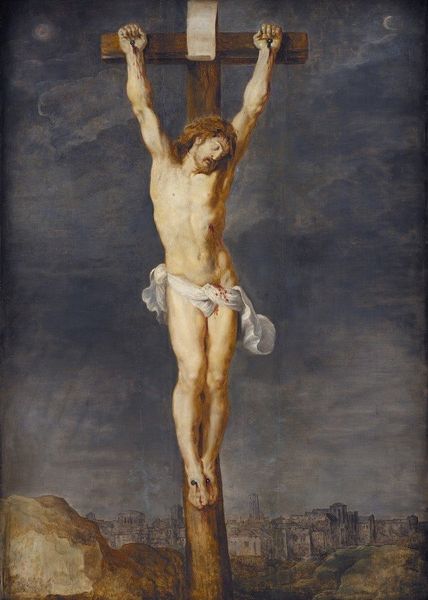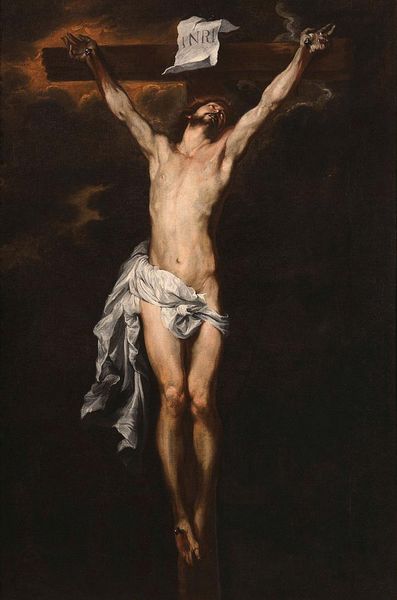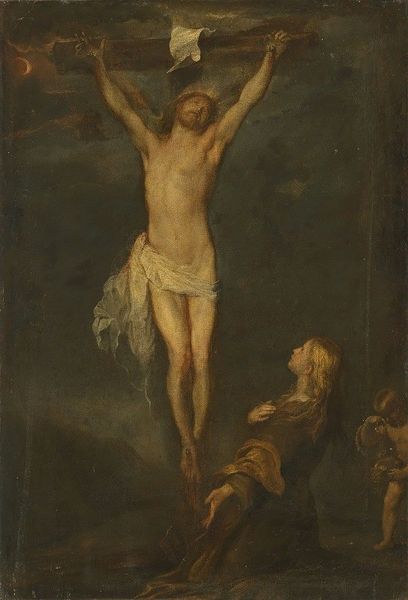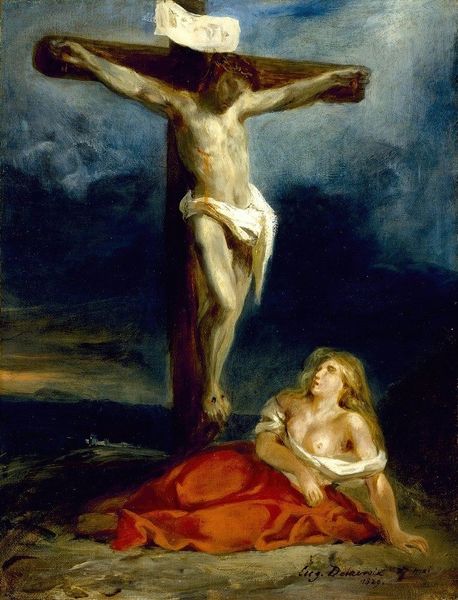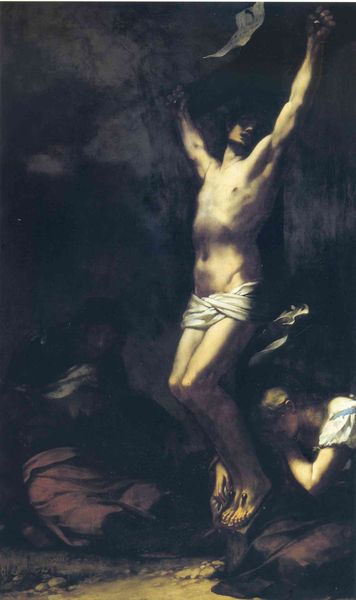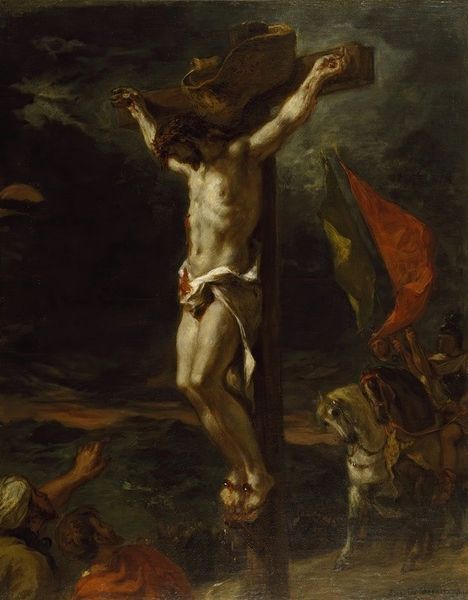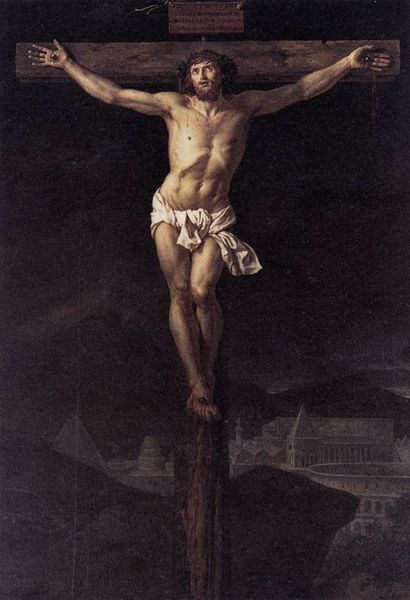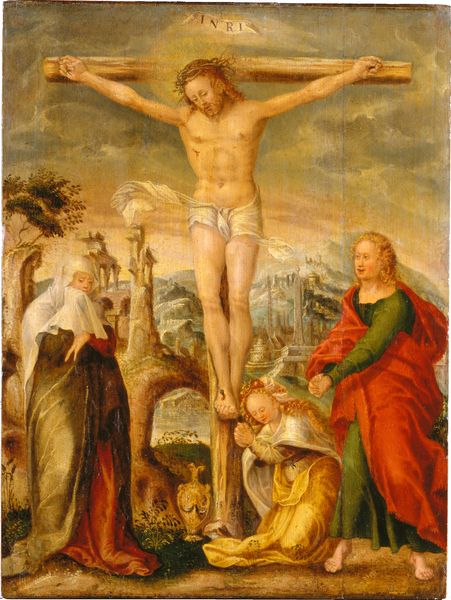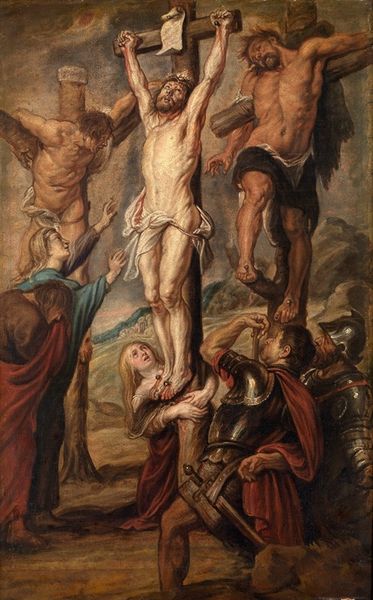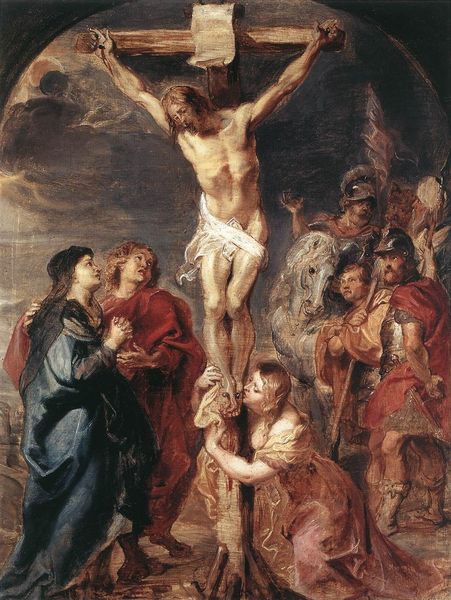
painting, oil-paint
#
portrait
#
allegory
#
baroque
#
painting
#
oil-paint
#
figuration
#
oil painting
#
history-painting
Copyright: Public domain
Editor: This oil painting is called "Christ Attended by Angels Holding Chalices," by Peter Paul Rubens. I'm immediately struck by how Rubens combines such human suffering with such delicate, ethereal figures of angels. What are some of the most prominent symbols or recurring motifs that you see within this work? Curator: Well, the chalices immediately jump out, wouldn't you say? These aren't just cups; they are potent symbols deeply interwoven with Christian liturgy and the Eucharist, representing the blood of Christ and the promise of salvation. Each angel carries one, creating a visual chorus. Consider what that repetition evokes. Does it feel almost like a ritual unfolding? Editor: Absolutely, the repetition emphasizes a ritualistic act. But the skull at the base of the cross - does that represent mortality in contrast to salvation? Curator: Precisely. It's a classical memento mori, a reminder of death, but Rubens places it in the context of Christ’s sacrifice, subtly transforming it into a symbol of triumph over death. Note also, where the angels are. The visual symbolism elevates the earthly death into heavenly importance. Notice too how Rubens doesn’t shy away from depicting Christ's pain, yet tempers it with a softness. What does that softness tell you about Rubens's intentions? Editor: It suggests that he’s not just interested in portraying suffering, but also divine love and grace. The soft forms of the angels add to that effect. Curator: Exactly. And isn't it intriguing how the angels almost seem to be actively participating in Christ's suffering, collecting his blood in the chalices? They're not passive observers; they are integral to the story of redemption. It ties directly into contemporary ideas of the passion as iterative and participatory, of direct relevance to a viewer's devotional practices. Editor: It really does shift my understanding, seeing the angels as active participants rather than just witnesses. It’s as though they are co-creating the symbolic narrative. Curator: Indeed! By exploring these symbols, we unveil the depth of meaning Rubens layered into the painting, inviting viewers into a more profound engagement with the subject matter.
Comments
No comments
Be the first to comment and join the conversation on the ultimate creative platform.

